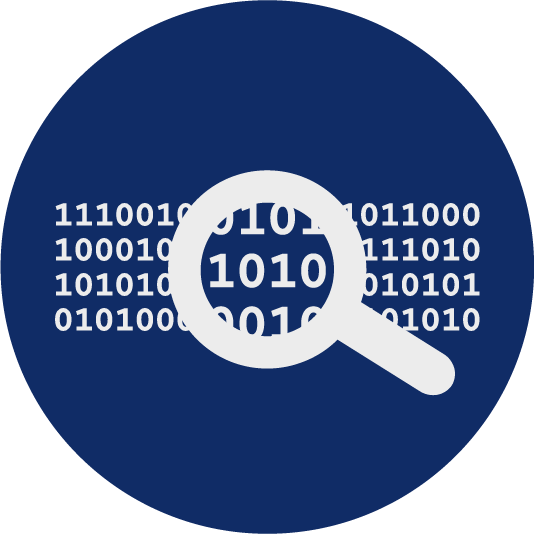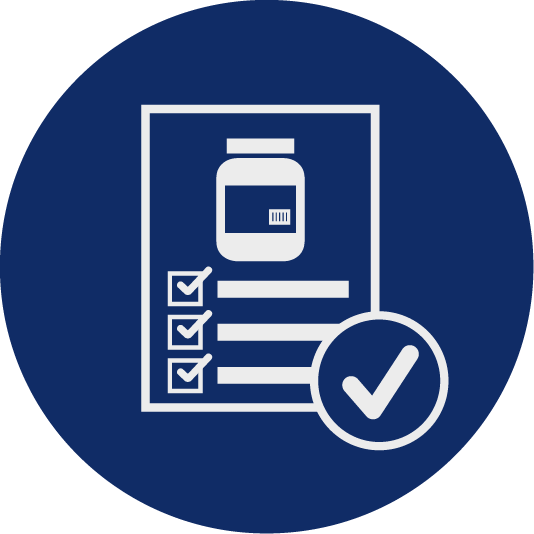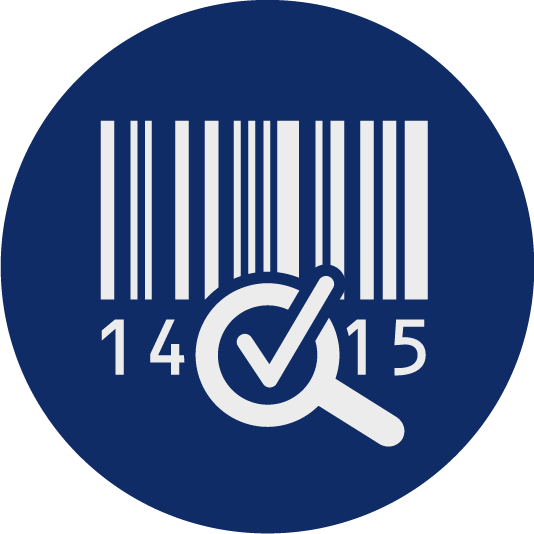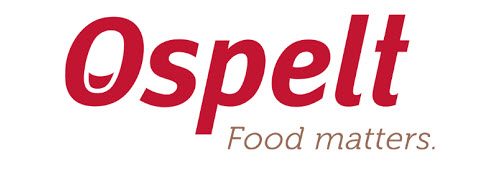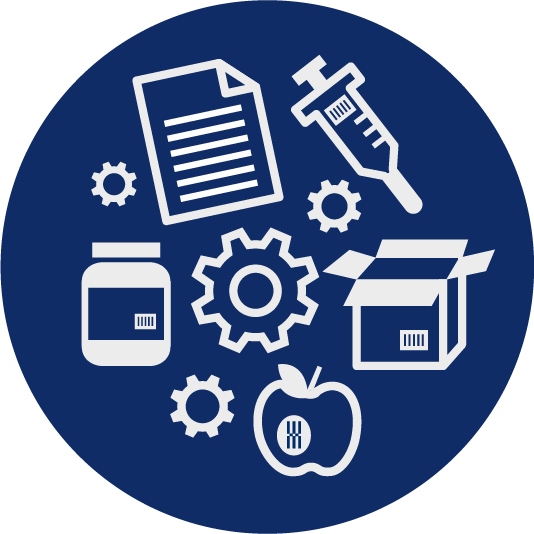firstbase - Data exchange made easy
GS1 Switzerland expands its solution portfolio with a product data exchange platform.
The new data exchange platform offers all participants the opportunity to exchange trusted product master data. Through various channels, data senders will provide data receivers with up-to-date, complete and correct master data from the source.
The electronic exchange of data is becoming increasingly important in supply chain management. The globally active organization GS1 supports this need through globally standardized document formats and process recommendations, which are available to all players in the market. GS1 Switzerland attaches great importance to the exchange of trustworthy data. To this end, GS1 Switzerland already offers trustbox, a solution that integrates GS1 standards into user-friendly applications and provides verified data from a single source.
As part of its 2022+ strategy, GS1 Switzerland is pursuing the goal of offering all market participants a platform on which product master data can be provided and exchanged. With the experienced technology partner Bayard from Cologne, GS1 Switzerland has started the implementation and will implement the GS1 Switzerland data exchange platform "firstbase" based on the "byrd" platform in the coming months. In the first step, trustbox will move to the new platform, followed by the industry solutions for the healthcare sector, the consumer goods industry and later for other industries.
All GS1 Switzerland members, whether small or large companies, will thus have access to electronic master data exchange in Switzerland and worldwide via the Global Data Synchronisation Network (GDSN). Suppliers can merge, maintain and validate master data for their products with images and other media assets on the modern and intuitive platform via a web UI or direct connection. The product content is aggregated and consolidated on the platform and provided to the business partners from one source in a quality-assured manner for their purchasing, logistics and sales processes. Suppliers and recipients worldwide are connected via the GDSN and other interfaces. In this way, manufacturers of medical devices can also fulfill the requirements of the database for the central administration of medical devices EUDAMED operated by the European Commission and the EU member states and other official registers via the GS1 Switzerland platform. With this step, GS1 Switzerland is convinced to offer its members sustainable benefits in the digitalization of processes around the supply chain.
We will be happy to keep you informed about the further project progress and future offerings. Sign up for the newsletter: >>Subscribe Newsletter>>
Implementation details
This is what you need to consider in the implementation
How complex the transition from barcode to 2D code is depends largely on the individual circumstances, the objectives and the choice of product. For example, it is much easier to change the barcodes on a product where it is not integrated into the packaging layout but applied in the form of an adhesive label.
For a product like washing powder, where the EAN/UPC barcode has already been pre-printed on the empty packaging, the implementation is much more complicated. The only practical way would probably be to replace the barcode with GS1 DataMatrix codes that include a serial number in addition to the GS1 article number. In this way, the packaging can continue to be pre-printed, albeit with higher demands on the printing process and the filling process. In production, the packages are then filled as usual and the additional data is subsequently linked to the serial numbers in the ERP/PIM. However, this circumstance requires an exchange of master data at serial number level with the retail partners, who must then also be able to retrieve this data at all necessary points (such as the checkout environment).
Use our blueprints as a guide
In order to support you optimally during the implementation, we have developed blueprints for you. Please contact us if you need an additional blueprint.
| Blue Print |
is being or has been piloted at |
Complexity |
|
|---|---|---|---|
| Replace EAN/UPC barcode with GS1 DataMatrix |
|
low |
|
| Replace EAN/UPC barcode with GS1 DataMatrix for piece goods | Coop | medium | |
| Replace EAN/UPC barcode with GS1 DataMatrix for variable-quantity fresh products | GS1 Belgilux | medium | |
| Add EAN/UPC barcode with QR code and GS1 Digital Link | low | ||
| Supplement or replace EAN/UPC barcode or GS1 DataMatrix with QR Code and GS1 Digital Link | high | ||
| General serialization of products | high |
Blue Print: Replace EAN/UPC barcode with GS1 DataMatrix
Goals
- Reduction of the space required for the GS1 data carrier
- Use at the checkout (Point Of Sale) and in self-scanning
Steps
- Together with the supply chain partners involved in the process, determine which products are suitable for testing the transition.
- Define a schedule with your partners.
- Replace the EAN/UPC barcode with the GS1 DataMatrix code.
- Document your experience and the requirements that need to be met in your operation in order to start pilot projects with a trading partner.
Blue Print: Replace EAN/UPC barcode with GS1 DataMatrix for piece goods
Goals
- Add additional data such as MHD, batch number in the 2D code with the help of the GS1 Application Identifier (AI).
- Use at the checkout (Point Of Sale) and self-scanning
Steps
- Together with the supply chain partners involved in the process, determine which products are suitable for testing the conversion.
- Determine with your trading partner what additional data should be encoded in the 2D code in addition to the mandatory GS1 article number (GTIN).
- Consider the production process of the selected products and ensure that the additional data such as the BBD is available in the printing process.
- Contact your solution provider for the printing process and clarify whether the existing solution is capable of printing the necessary data in a GS1 DataMatrix.
- Check how you can cover the different requirements of your trading partners in your own production.
- Define a schedule with your partners.
- Replace the EAN/UPC barcode with the GS1 DataMatrix code.
- Document your experiences and the requirements that need to be met in your operation in order to start pilot projects with a trading partner.
Blue Print: Replace EAN/UPC barcode with GS1 DataMatrix for variable-quantity fresh products
Goals
- Use of the GS1 article number (GTIN) instead of the nationally unique GS1 article number (RCN) at best.
- Bar coding of product weight or individual price for quantity-variable fresh products
- Replacement of EAN/UPC barcodes by GS1 DataMatrix
- Using GS1 Application Identifier (AI) to add additional data such as MHD, batch number in 2D code
- Use at the checkout (Point Of Sale) and self-scanning
Steps
- Together with the supply chain partners involved in the process, determine which products are suitable for testing the conversion.
- Determine with your trading partner what additional data should be encoded in the 2D code in addition to the mandatory GS1 article number (GTIN).
- Consider the production process of the selected products and ensure that the additional data such as the BBD is available in the printing process.
- Contact your solution provider for the printing process and clarify whether the existing solution is capable of printing the necessary data in a GS1 DataMatrix.
- Check how you can cover the different requirements of your trading partners in your own production.
- Define a schedule with your partners.
- Replace the EAN/UPC barcode with the GS1 DataMatrix code.
- Document your experiences and the requirements that need to be met in your operation in order to start pilot projects with a trading partner.
Blue Print: Add QR Code and GS1 Digital Link to EAN/UPC Barcode
Goals
- Supplement EAN/UPC barcodes with QR codes that can be used for consumer engagement
- Add additional data such as MHD, batch number in the 2D code using the GS1 Digital Link standard
- Specify which web page is displayed if a consumer scans the QR code with their cell phone
Steps
- Together with the supply chain partners involved in the process, determine which products are suitable for testing the extension.
- Determine for your company what additional data should be encoded in the 2D code in addition to the mandatory GS1 article number (GTIN). This depends on the consumer needs you want to cover.
- Consider the production process of the selected products and make sure that the additional data is available in the printing process or can be pre-printed.
- Contact your solution provider for the printing process and clarify whether the existing solution is capable of printing the necessary data in a QR code. Take into account the space requirements.
- Add the QR code and GS1 Digital Link to the EAN/UPC barcode.
- Document your experience and the requirements that must be met in your operation in order to be able to start pilot projects with a trading partner.
Blue Print: supplement or replace EAN/UPC barcode or GS1 DataMatrix with QR code and GS1 Digital Link
Goals
- Add or replace EAN/UPC barcodes or GS1 DataMatrix with QR codes that can be used for consumer engagement
- Add additional data such as MHD, batch number in the 2D code using the GS1 Digital Link standard
- Determine which web page is displayed if a consumer scans the QR code with their cell phone
Steps
- Together with the supply chain partners involved in the process, determine which products are suitable for testing the extension.
- Determine for your company what additional data should be encoded in the 2D code in addition to the mandatory GS1 article number (GTIN). This depends on the consumer needs you want to cover and the requirements of your trading partners.
- Consider the production process of the selected products and ensure that the additional data is available or can be pre-printed in the printing process.
- Contact your solution provider for the printing process and clarify whether the existing solution is capable of printing the necessary data in a QR code.
- Replace the EAN/UPC barcode or GS1 DataMatrix with the QR code and GS1 Digital Link.
- Document your experience and the requirements that need to be met in your operation in order to start pilot projects with a trading partner.
Blue Print: General serialization of products
Goals
- Serialization of all products so that additional data can be exchanged with trading partners as consumer unit master data
- Most precise tracking and traceability
Steps
- Together with the supply chain partners involved in the process, determine which products are suitable for testing the extension.
- Determine for your company which and how the additional data should be exchanged as master data in addition to the serialized GS1 article number (SGTIN) encoded in the 2D code. This depends on the consumer needs you want to cover and the requirements of your trading partners.
- Consider the production process of the selected products and ensure that the additional data can be captured based on the serial numbers.
- Contact your solution provider for the printing process and master data exchange and clarify whether the existing solutions are capable of covering the necessary processes.
- Start serializing your products.
- Document your experiences and the requirements that must be met in your operation in order to start pilot projects with a trading partner.
2D Codes
The future of retail
One solution for the future is 2D-Codes, with which you can encode significantly more data than with the EAN/UPC barcode commonly used today.
What is a 2D-Code?
A 2D (two-dimensional) barcode is a graphic image that stores information not only horizontally like conventional linear (one-dimensional) barcodes, but also vertically.
2D codes, such as the GS1 DataMatrix or a QR code with GS1 Digital Link, require only a third of the space of a barcode and can contain much more information than an EAN/UPC barcode.
Will the barcode now be replaced?
At the 2021 General Assembly, GS1 Global decided that two-dimensional (2D) codes such as the GS1 DataMatrix or QR code with GS1 Digital Link may be used at the point of sale in retail from 2027.
The advantages of 2D-Codes
2D-supporters in Switzerland
EAN/UPC barcode and 2D-Codes in comparison
| EAN/UPC-Barcode |
GS1 DataMatrix |
QR Code with GS1 Digital Link | |
|---|---|---|---|
| Encoded GTIN |
[check-orange] |
[check-orange] |
[check-orange] |
| Low space requirement | [check-orange] | [check-orange] | |
| Additional data can be encoded | [check-orange] | [check-orange] | |
| BBD control at the checkout | [check-orange] | [check-orange] | |
| Enables the use of the GTIN for variable-measure consumer units | [check-orange] | [check-orange] | |
| Additional information on allergens, ingredients, product videos, etc. | [check-orange] |
Statements of 2D-Codes supporter
Standard article number (SAN)
Standard article number replaced with 2D data carriers
The SAN (Standard Article Number/Standard Number) is a specific four-digit identification for variable-quantity fresh produce. However, GS1 recommends the use of the globally unique GTIN together with a 2D data carrier instead of the SAN.
DThe most common variant is "standard article number + price"
GS1 Switzerland maintains a standard number catalogue for variable-quantity consumer units for
- meat and fish products
- dairy products
- fruit and vegetables
The standard article numbers are available to you as an Excel table and as a PDF. You can thus check at any time whether a 4-digit identification already exists for your variable-quantity article.
Note
Since 2018 no new standard numbers have been assigned.
GS1 recommends the use of the globally unique GTIN instead of the SAN. Unfortunately, not all market participants are yet able to process the required alternative symbologies - GS1 DataBar and GS1 DataMatrix.
If you intend to use one of the two variants, you should definitely contact GS1 Switzerland in advance. We will be happy to help you find the best solution for you.
GTIN Registry
GTIN registration made easy
Create and manage your GTINs and EAN-13 barcodes easily now with the GTIN Registry, the free offer for our members.
How it works
Log in
Log in to the programme and create a new GTIN. The next free number is automatically displayed and the check digit is immediately calculated correctly.
Describe
Describe the product completely and correctly and upload a picture.
Create
Create a print-quality barcode with one click, download it and print it on the packaging.
Done
The product is now uniquely identified worldwide and ready for stationary trade and for sale at online marketplaces.
Frequently asked questions
What is a GTIN?
You need the GTIN, the "Global Trade Item Number", to create a barcode for the labelling of your products.
What is the GTIN Registry?
The GTIN Registry is an online tool. This tool allows you to create GS1 article numbers (GTINs) from the company prefix (GCP) and then download EAN-13 barcodes. In addition, you can enter product master data in structured form.
Who can use the GTIN Registry?
The GTIN Registry is a service for members of GS1 Switzerland who have licensed one or more company prefixes (GCP).
How do I get GTINs?
GTINs can be obtained by going to the ordering website: https://www.gs1.ch/en/barcodes-standards/barcodes
What are the benefits of using the GTIN Registry?
Thanks to the GTIN Registry:
- you always know which GTIN you have used for which product
- the next free GTIN is assigned directly to a new product
- there's no need to calculate the check digit
- you get the right barcode in the best quality and according to the requirements of the trade concerning valid and verified identification
Kann ich für meine MitarbeiterInnen einen Zugang einrichten?
he GTIN Registry is multi-user capable. This allows you to delegate GTIN management to your employees.
Make sure that your deputy has access to the GTIN Registry.
To do this, they must first create (register) an online account: To register.
Then let us know via the contact form for which persons (name, e-mail address) we may activate the access.
I have lost my password. What can I do?
Please use the "Forgotten password" function on www.gtinregistry.ch, which you will find directly under the login area. To do so, click on "Login" and on "Forgotten password" and follow the instructions step by step.





